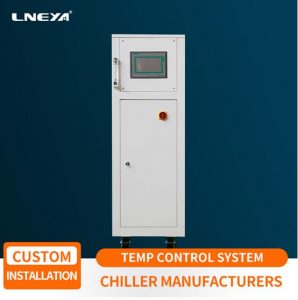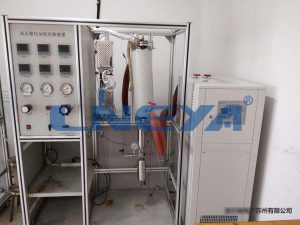What are the decarboxylation reaction conditions and process temperature control?

The decarboxylation of aromatic acids is easier than that of fatty acids. For example, benzoic acid can be decarboxylated by adding a little copper powder as a catalyst in quinoline solution and heating.
When a strong electron-withdrawing group is attached to the α-C of the carboxylic acid, heating can make it decarboxylate more smoothly. For example: when the ortho-diaromatic organic acid is heated, it is easy to remove a carboxyl group, but when the temperature is low, an acid anhydride will be formed. When different polycarboxylic acids are heated, according to the different activities, some are decarboxylated, some are dehydrated, some are decarboxylated and dehydrated again, dehydration above pimelic acid, and general decarboxylation below.
Fatty acid: This reaction is generally not used to prepare alkanes for general fatty acids, especially long-chain fatty acids, because the reaction temperature is too high, the yield is low, and it is not easy to separate. However, if the α-carbon atom of the fatty acid has an electron-withdrawing group such as nitro, halogen, carbonyl, cyano, etc., it makes decarboxylation easy and the yield is high, but their reaction processes are not exactly the same.
The general decarboxylation reaction does not require a special catalyst, but is carried out under the following conditions: (1) heating; (2) alkaline conditions; (3) coexistence of heating and alkaline conditions. The most commonly used decarboxylation method is to heat the sodium salt of carboxylic acid with soda lime (CaO + NaOH) or solid sodium hydroxide, and a decarboxylation reaction occurs, that is, -COONa is replaced by an H atom to generate a carbon atom less than the sodium carboxylic acid salt alkanes.
It can be seen that no matter the decarboxylation reaction of any substance, it is necessary to carry out temperature heating control during the reaction process. LNEYA specializes in the production and development of heating systems, with a temperature control range of 50 degrees to 300 degrees, which is suitable for the needs of pharmaceutical and chemical companies in various process production and experimental use. It can realize high temperature cooling process, directly cooling from high temperature of 300 degrees to 50 degrees. Equipped with a heating and cooling integrated container, the heat exchange area is large, the heating and cooling rate is fast, and the demand for heat transfer oil is small. The entire cycle of the product is closed, there is no oil mist volatilization at high temperature, and the heat transfer oil will not be oxidized and browned; it has the function of correcting the internal cycle temperature probe PT100, and has self-diagnosis and intelligent safety alarm. The equipment is equipped with a variety of safety protection functions such as high-voltage pressure switches, overload relays, and thermal protection devices to ensure the safety of your experiments and production.
Recommandations connexes
-
Quels sont les effets du séparateur d'huile sur l'équipement analysé par le fabricant de refroidisseurs ?
887Oil separators use more accessories in thechiller refrigeration system. So as users, we need to understand where the mainimpact is in order to better use the equipment.In the configuration of the chiller, theposition of the oil separator is aft...
Voir les détails -
Temperature cycle failure analysis of single fluid heating refrigeration system
1106The performance of single-fluid heating and cooling systems of different manufacturers is different. LNEYA is committed to creating a high-configuration single-fluid heating and cooling system to solve the problem of cooling and heating temperatur...
Voir les détails -
Nécessité d'un cycle de chauffage et de refroidissement de la température dans le processus d'hydrogénation catalytique
1124Ces dernières années, avec l'augmentation du prix du pétrole, la demande de benzène obtenu à partir de benzène de cokéfaction a augmenté, couplée à l'importance croissante accordée par le pays à la protection de l'environnement, l'application généralisée de l'hydrogénation du benzène de cokéfaction....
Voir les détails -
refroidisseurs hydrauliques refroidisseurs industriels/de laboratoire ?
834Les refroidisseurs hydrauliques ne sont pas directement équivalents aux refroidisseurs industriels ou aux refroidisseurs de laboratoire, mais ils ont une certaine pertinence et des fonctions qui se recoupent. Ce sont tous des dispositifs utilisés pour produire des effets de refroidissement. La principale différence réside dans l'ap...
Voir les détails
 LNEYA Industrial Chillers Fabricant Fournisseur
LNEYA Industrial Chillers Fabricant Fournisseur












